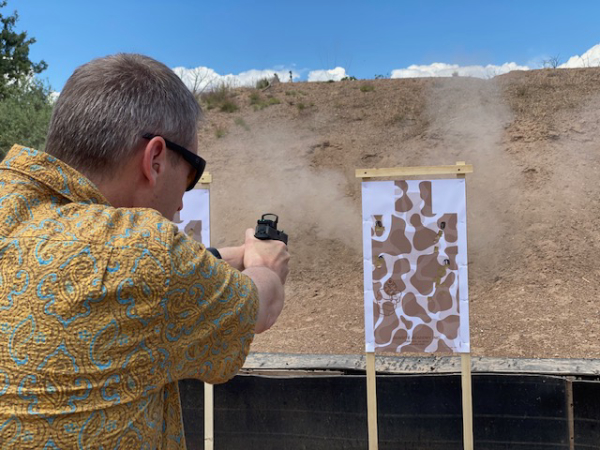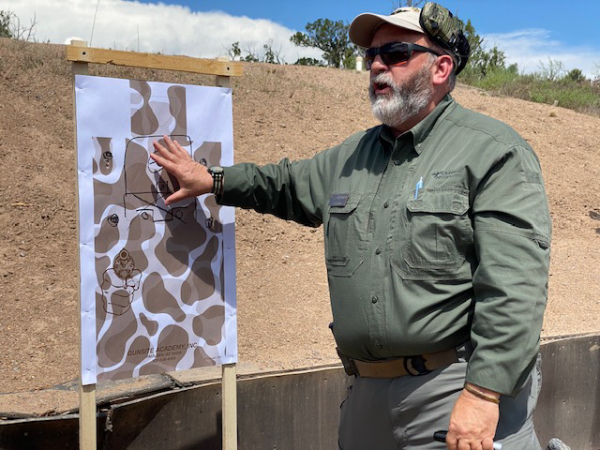There’s nothing like several days spent at a shooting event to bring home just how perishable shooting skills really are. Stepping to the line for the first time at Gunsite last week, I realized it hadn’t been days, or even weeks, since I’d actually done live-fire training. It had been months.
And like riding a bicycle or hitting a golf club, you may have the old muscle memory, but the old muscles don’t snap right back. That’s when the mental part of shooting comes into play. And this mental aspect isn’t positive. It’s the point where you know you’re capable of shooting good groups, or rapid sequences, but your body isn’t quite where it needs to be to complete the interaction. That introduces self-doubt, and it’s the one mental skill that never seems to lose its ability to step right up and cause you to feel like you’re trying to thread a needle wearing boxing gloves.
It’s always good to remember that when someone tells you “it’s just like riding a bicycle” they’re leaving out the fact that, just like riding a bicycle, you’re going to have more than a few wobbles, it not a couple of “unscheduled dismounts” along the way.
What they mean is “eventually, it’s just like riding a bicycle,. But don’t lose sight of the fact you’ll have to work through some rough spots, so get on with it.”
During the first shooting session last week, I wasn’t concerned with tight groups, rapid strings of fire, or even smooth draw strokes. All those finer skills were supplanted by my primary goal: to put every round into the target. The “one ragged hole” groups would have to wait while I worked through the “don’t shoot the target stand” drills.
Thankfully, Gunsite’s instructors realize there are disparate abilities. And (I suspect) it’s one reason sessions with new products always include what some in attendance consider inordinately long dry-fire sessions. They serve two purposes: to allow all of us time to get more familiar with whatever we’ll ultimately be testing, and give some of us time to shake the rust off our shooting mechanics.

There’s little doubt that dry-fire works. Or that even a short dry-fire regimen before shooting results in better shooting. In my line of work it’s impossible to judge a gun’s accuracy if you’re not able to produce relatively tight groups. So…quit complaining and get busy on that breathe-squeeze-follow through practice- at home. The ammo you’ll save and the results you’ll produce on the range are worth it.
Shooting under the eyes of instructors who teach gunfighting is eye-opening.
The scoring boxes on their “humanoid” targets, for example, are smaller than most. That’s not an accident. They’re teaching combat shooting, not competition shooting. The eyes-nose-triangle in the “head box” and high chest area of the torso are when fights are ended most quickly. Their instruction has a simple goal: save lives.

It’s also eye-opening when they repeatedly emphasize that the “best” gunfight is one you can avoid.
That’s a point many of us forget when shooting on a square range. There, it’s easy to get into that “OK Corral” mentality. Transitioning into a simulator, it’s easy to see the point of range work: to make mechanics automatic. Clearing rooms inside or moving through an outdoor simulator is simpler if you’re not thinking about sight pictures or trigger technique. In scenario training, the goal’s boiled down to the essence of survival: shoot the threat without unnecessarily exposing yourself to the potential of being shot.
That’s when small motor skills take a vacation -and you see what you need to work on when you go back to the square range. You will want to get back to the range for more practice.
And, as always, we’ll keep you posted.
— Jim Shepherd